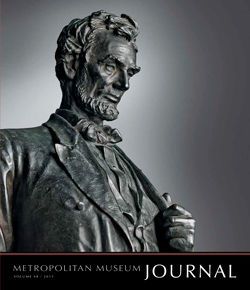Max Weber
Marius de Zayas Mexican
Not on view
Among the first group of modernist painters to congregate at 291, Max Weber (1881–1961) was a brief but important presence, particularly valuable for his connections with such artists as Henri Matisse and Henri Rousseau. Although he was in Stieglitz's good graces for a while, others in the Stieglitz circle, including de Zayas, disliked him. Weber's very vocal dismissal of Steichen's work and his alliance with photographers who were having their own problems with Stieglitz put him at odds with the group. In 1911, after an argument over prices for works in his first one-man show at 291, Stieglitz and Weber severed their relationship; the two never spoke again, and none of Weber's work remained in Stieglitz's vast art collection. He is disparagingly portrayed as an obsequious gnome in all of de Zayas's caricatures of him; here, his waning disk (in the most unfavorable, right position) seems to anticipate his imminent departure from 291.
Due to rights restrictions, this image cannot be enlarged, viewed at full screen, or downloaded.


